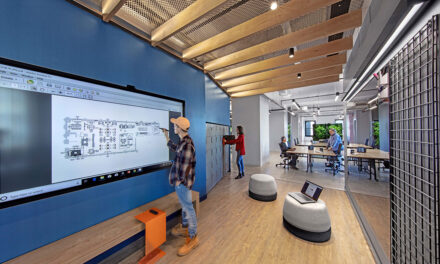According to the latest research study released by Technavio, the global architectural rendering software market is expected to expand at a CAGR of over 29% until 2020.
During 2015, the Americas accounted for around 41% of the market share in 2015 and is expected to dominate this market in terms of share by 2020. Factors such as growth in the commercial buildings segment and increased construction and renovation practices will aid in the growth of this market in the Americas during the period of 2016 to 2020.
This research report titled ‘Global Architectural Rendering Software Market 2016-2020’, provides an in-depth analysis of market growth in terms of revenue and emerging market trends. To calculate the market size, the report considers the revenue generated from the sales of architectural rendering software licenses and services.
“The demand for non-photorealistic rendering is increasing because of its growing acceptance among designers and architects. It is gaining prominence as it allows users to create an object or situation according to their imagination. Non-photorealistic rendering helps architects to design futuristic cities. The technique is widely used by real estate companies to incorporate artistic features in 3D construction models, which helps these companies attract customers,” said Amrita Choudhury, one of Technavio’s lead analysts for enterprise application research.
*Global architectural rendering software market by end-user 2015 (% share)
- Non-residential buildings 69.46%
- Residential buildings 49%
- Others 7.05%
Global architectural rendering software market in non-residential building segment
In 2015, the global architectural rendering software market in the non-residential building segment was valued at USD 103.5 million. The global architectural rendering software market is driven by the growth in the non-residential building segment, which includes commercial buildings, institutions, community centers, and industrial buildings. In 2015, the non-residential building segment held a share of 69.46% in the global architectural rendering software market. In the non-residential building segment, the commercial building segment accounted for the largest market share and is exhibiting faster growth compared to the industrial building segment.
Global architectural rendering software market in residential building segment
In 2015, the global architectural rendering software market in the residential building segment was valued at USD 35 million. In 2015, the residential building segment accounted for a share of 23.49% in the global architectural rendering software market. It is one of the fastest-growing segments of the market. In the developing countries, the maximum revenue is generated from the residential building segment, followed by the commercial building segment. Many construction companies in developing countries have started focusing on the construction of residential buildings because of the increase in population. As a result of the growing demand for residential buildings in developing countries, more construction companies are depending on rendering software providers to develop 3D designs of residential buildings, thereby increasing the demand for architectural rendering software.
Others
The others segment includes trade shows and sectors such as military, government, and construction. Increased use of architectural rendering software in Middle East and emerging Asian countries will drive the growth of this segment over the next four years. Architectural rendering software is an important part of modern-day construction planning. Architecture and designing firms are highly competitive. Buyers have several solutions available while buying an architecture rendering software, leading to a high bargaining power for buyers. The demand from buyers is increasing, and architecture firms and designers have to be able to convince and impress their clients with innovative and unique ideas, renderings, and models.
Request sample report: http://bit.ly/297bsad
About Technavio
Technavio is a leading global technology research and advisory company. The company develops over 2000 pieces of research every year, covering more than 500 technologies across 80 countries. Technavio has about 300 analysts globally who specialize in customized consulting and business research assignments across the latest leading edge technologies.
Technavio analysts employ primary as well as secondary research techniques to ascertain the size and vendor landscape in a range of markets. Analysts obtain information using a combination of bottom-up and top-down approaches, besides using in-house market modeling tools and proprietary databases. They corroborate this data with the data obtained from various market participants and stakeholders across the value chain, including vendors, service providers, distributors, re-sellers, and end-users.
*SOURCE: Technavio research




